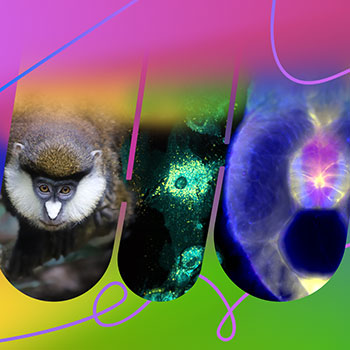10/07/2022
Skin Care
Showcasing the Colorful Complex Octopus
It’s no secret that octopus’ skin is pretty spectacular, as the animal can change its color and even texture in the blink of an eye. Yet, octopus researcher Chelsea Bennice, Ph.D., said she thinks their skin could also be the key to keeping them healthy.
Bennice, an affiliate faculty in the Charles E. Schmidt College of Science, regularly dips beneath the surface with her scuba gear to find and photograph octopus to study the bacterial community living on their skin called the microbiome. With this image, she won the In-the-Field faculty category for the 2021 annual Art of Science photography contest, hosted by FAU’s Division of Research.
For this photograph, Bennice used her Sony Alpha 6500 camera with underwater housing. Once she spotted the colorful critter, she moved in slowly to not spook it. For her, this image highlights their “complex and extraordinary skin pattern,” she said. Octopus skin is loaded with chromatophores, which are pigment-filled organs, and reflecting cells, along with muscles responsible for changing their color and skin texture, Bennice said.
Bennice uses her photography in her research to identify octopus species as well as for science communication in her presentations, publications and social media platforms. “Photography is a great tool for science, but can also bridge the gap between science and the public,” said the self-proclaimed “Octogirl.” “As a conservationist, I’m passionate about using photography to inspire and educate the next generation of ocean lovers.”
If you would like more information, please contact us at dorcommunications@fau.edu.

